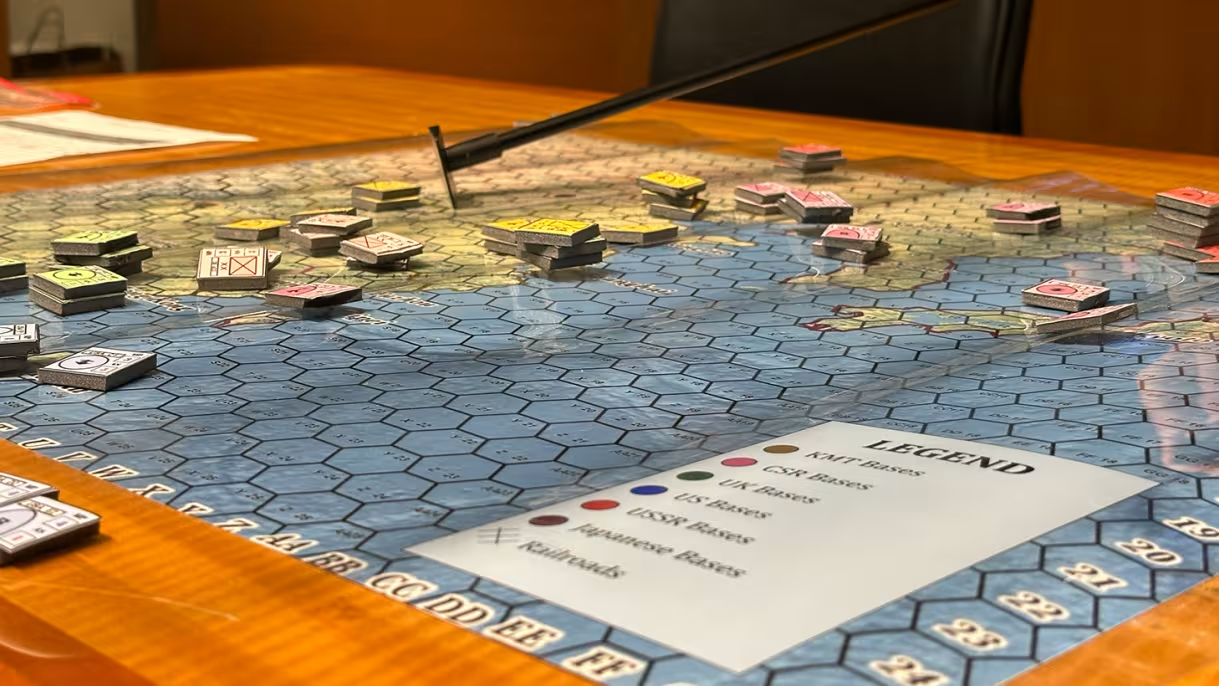

Princeton Students Conduct “What If” Simulation of Pivotal WWII Crisis
How would things be different if you got a do-over? The “what-if” game is always an interesting thought exercise — and for the first time, the Princeton School of Public and International Affairs’ Center for International Security Studies (CISS) used this question as the jumping off point for its semi-annual crisis simulation.
On November 9, the simulations team at CISS hosted its first event of the 2024-25 academic year. Launched in 2010, the simulations are a full-day exploration of “what if,” in which students from across Princeton — regardless of program or year — along with external participants, respond to a theoretical geopolitical crisis. Participants are randomly assigned to teams representing various stakeholders and tasked with developing political and military responses to the scenario in question.
While past simulations have focused on hypothetical situations that take place in the present or future, this fall’s simulation was a first: the simulation team chose to reconsider the Invasion of Manchuria, Japan’s incursion into China, which began in 1931 and is considered a precursor event to World War II.
“Our goal is to expose students to diplomatic decision-making and strategy-making in action rather than from the strictly academic lens,” said Ethan Magistro, an MPA student at the School and a member of the simulation team. “Each crisis has its own takeaway point, so on top of this being a way for individuals to practice their international diplomacy skills and military strategy skills, each simulation has a lesson.”
This fall’s scenario was set in the immediate aftermath of Japan’s incursion, circumstances which have some potential parallels to the present day.
“The setting is that the world has essentially entered a period of economic downturn,” Magistro said. “Tariffs are increasing and the international order is weak. There’s a revisionist state, Japan, that is intent on challenging that international order. I think there's a lot of parallels you might see to what's going on today. History never rhymes perfectly but those are themes we thought were particularly important.”
In actuality, the international community did not intervene following Japan’s invasion. But that’s not what happened in the CISS simulation.
“Our teams certainly changed history,” said Magistro. “In actual history, the United States, the U.S.S.R. and Great Britain did very little in response to the invasion of Manchuria. They let Japan secure their gains and this, a lot of historians argue, laid the roadwork to World War II in Asia.”
But in CISS’ simulation, the U.S.S.R. invaded Manchuria from the north — which, in reality, took another decade to occur — and the U.S. supported China in the south, working together to push out Japan.
“We thought the Imperial Japan team was going to act far more aggressively,” Magistro said. “But in response to the lack of aggression, the Soviet Union team and the United States team saw an opportunity for bilateral diplomacy and a bilateral military effort, which neither of the states could have done alone.”
For Magistro and his fellow organizers, it was an unexpected outcome.
“Hopefully one takeaway from the simulation and its results is that there is room for bilateral cooperation to resolve issues today. That to me is the ideal outcome of our simulations. Cooperation might not be perfect, but the simulations show that there’s room for good diplomacy, even if it also requires military intervention,” he said. “At the bare minimum level, this simulation left something for participants to think about: What is the cost of nonintervention?”
For Magistro, who first encountered the simulations team as a simulation participant three years ago and now helps design and facilitate the events, basing the fall simulation on actual events reinforced that applying different approaches can transform outcomes.
“It gave participants a way of seeing what happened and trying something else,” he said. “There’s a lot of room for creativity. It gives an understanding of how your tactical actions may affect your pursuit of your strategy, or what your second- and third-order consequences do to your main strategy — for example, how far in advance you have to think about the other side’s reactions. That’s a broadening of thinking you might not necessarily get in the classroom.”

